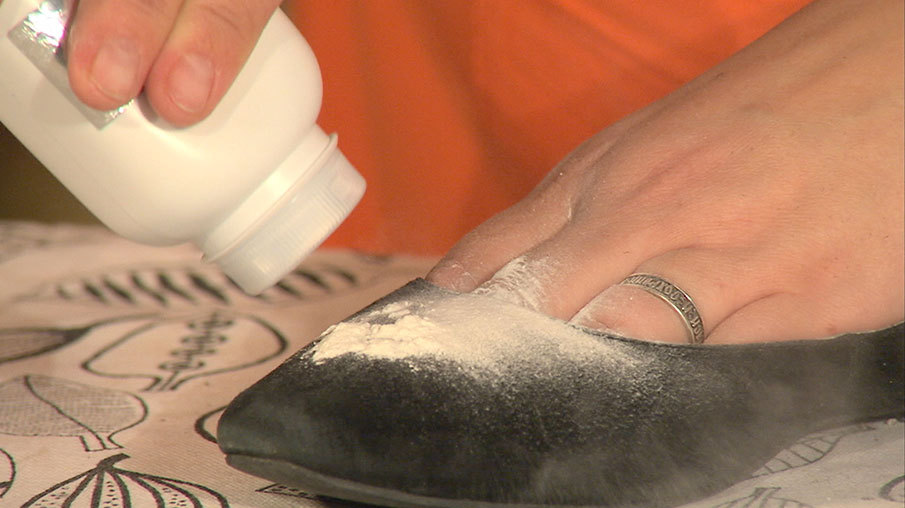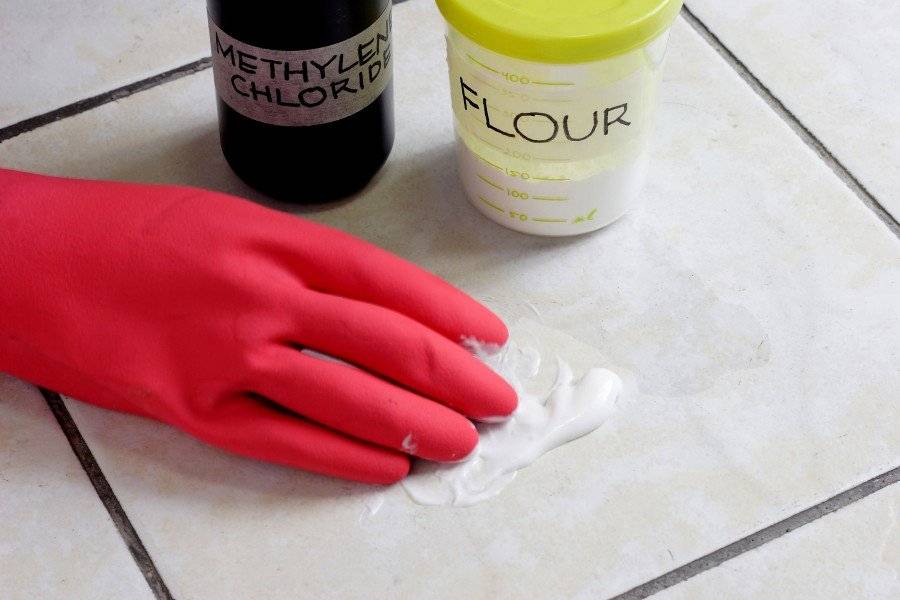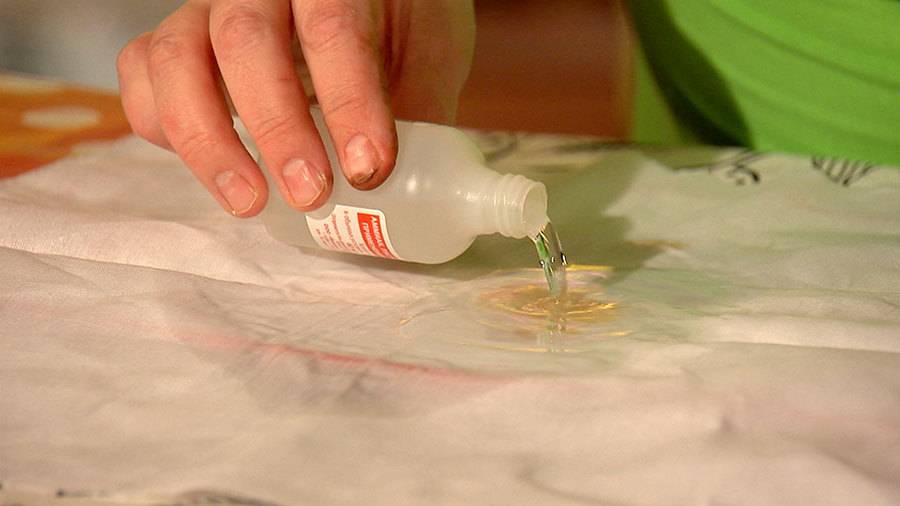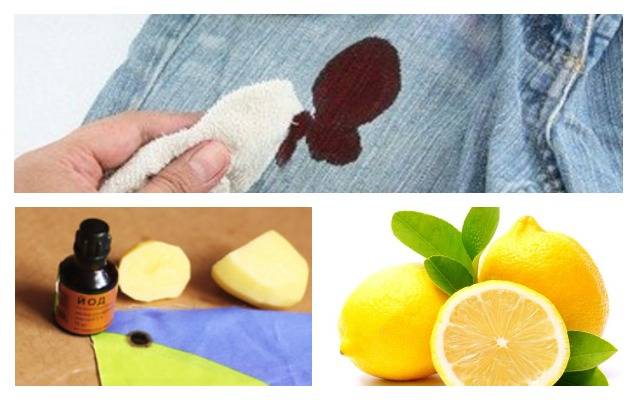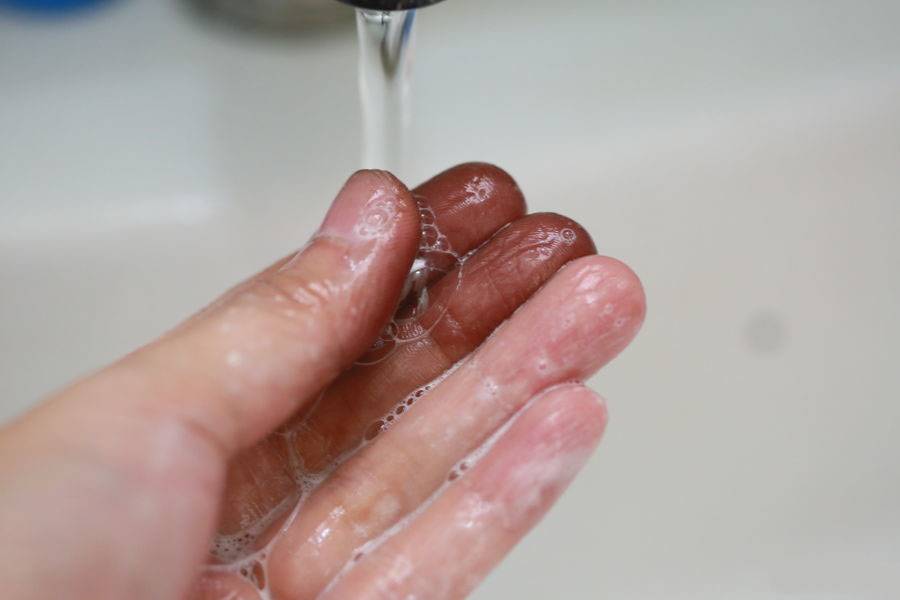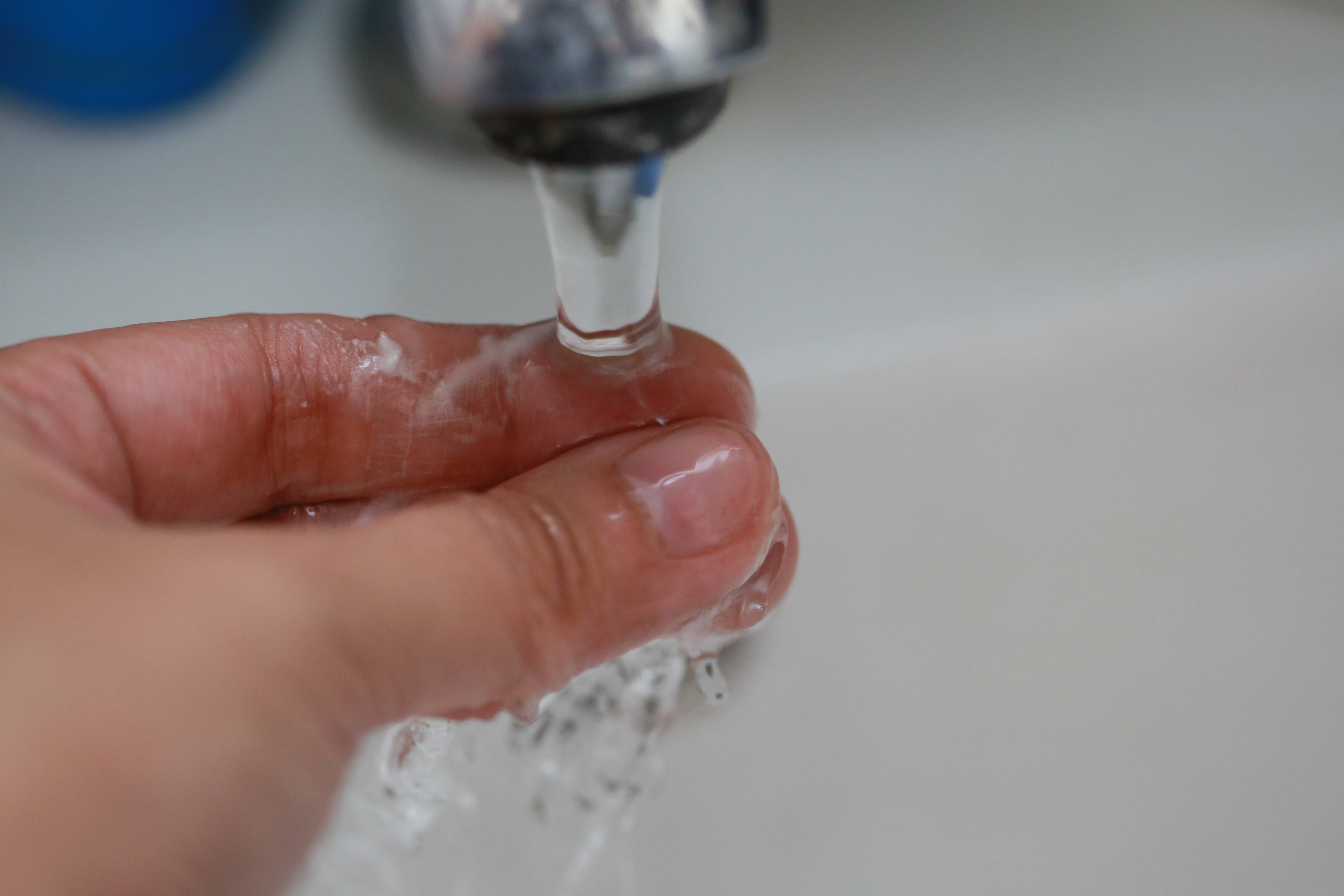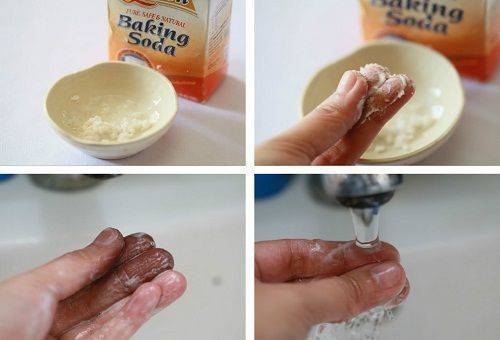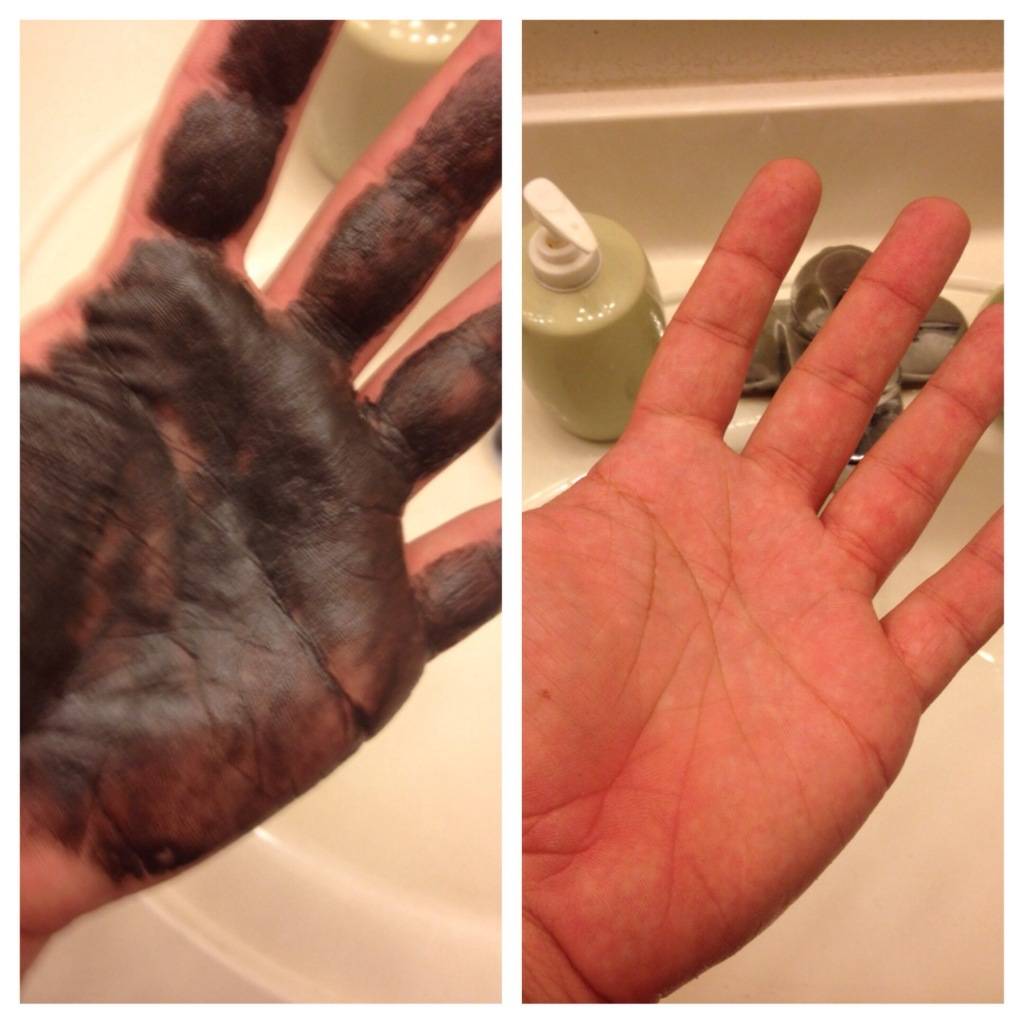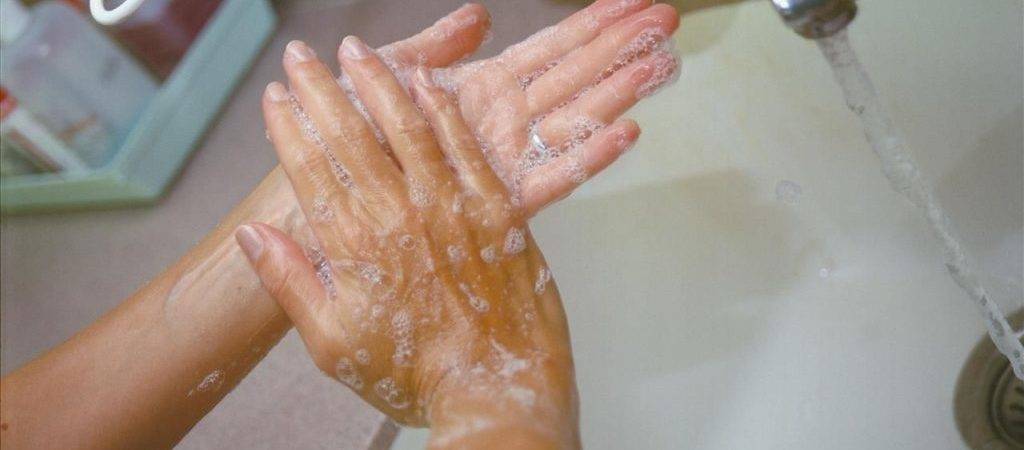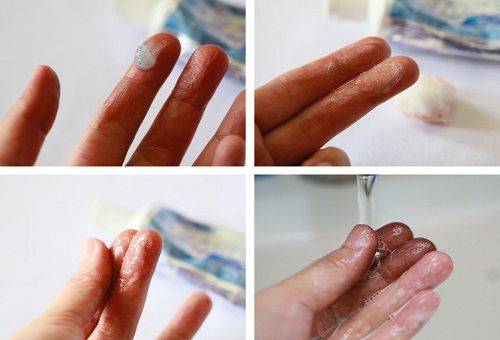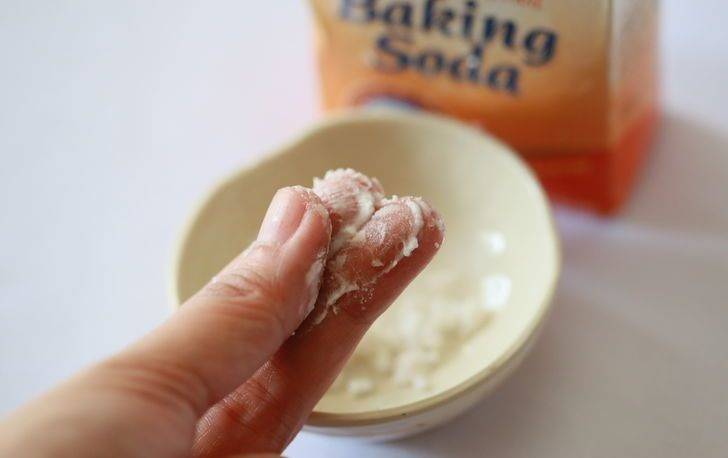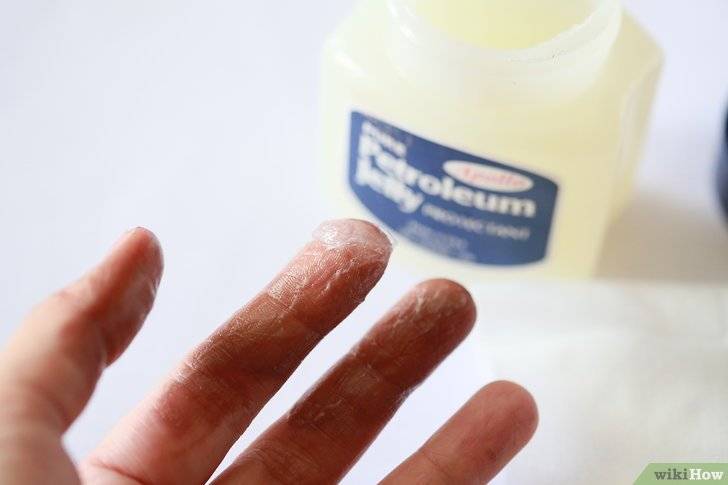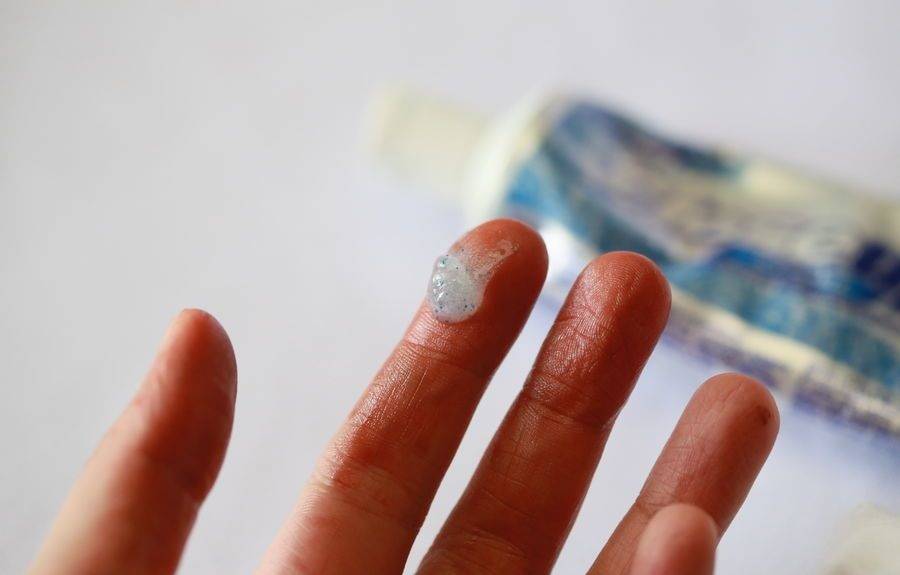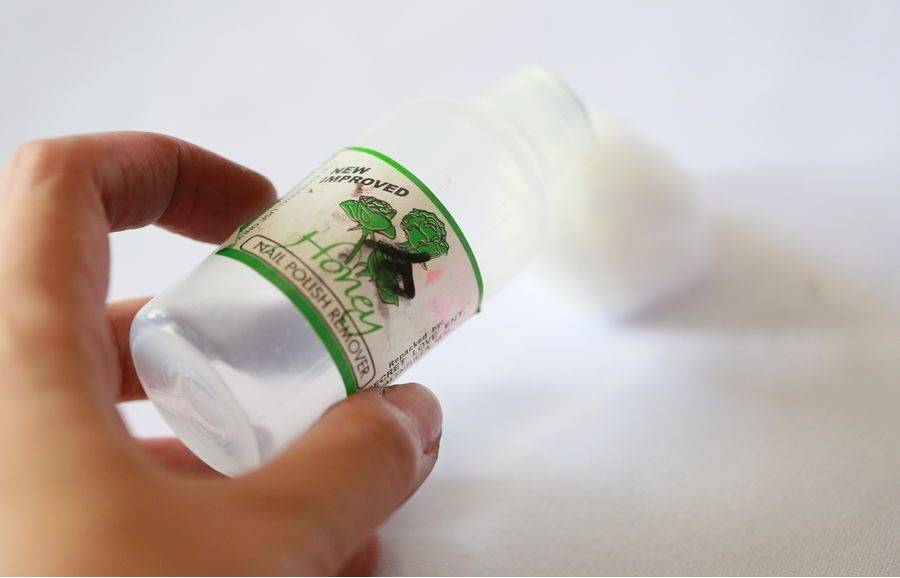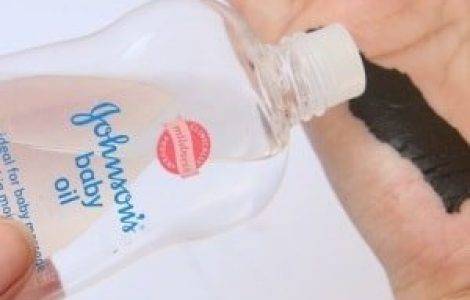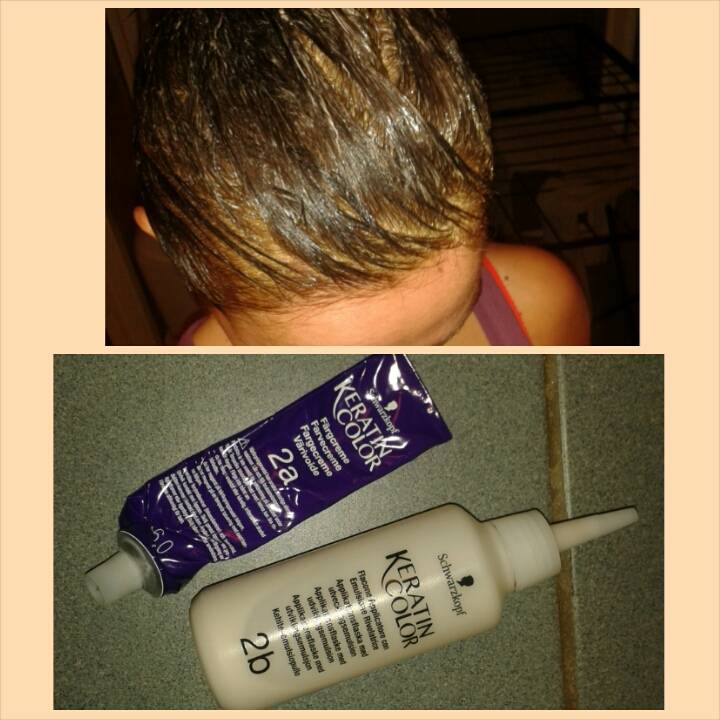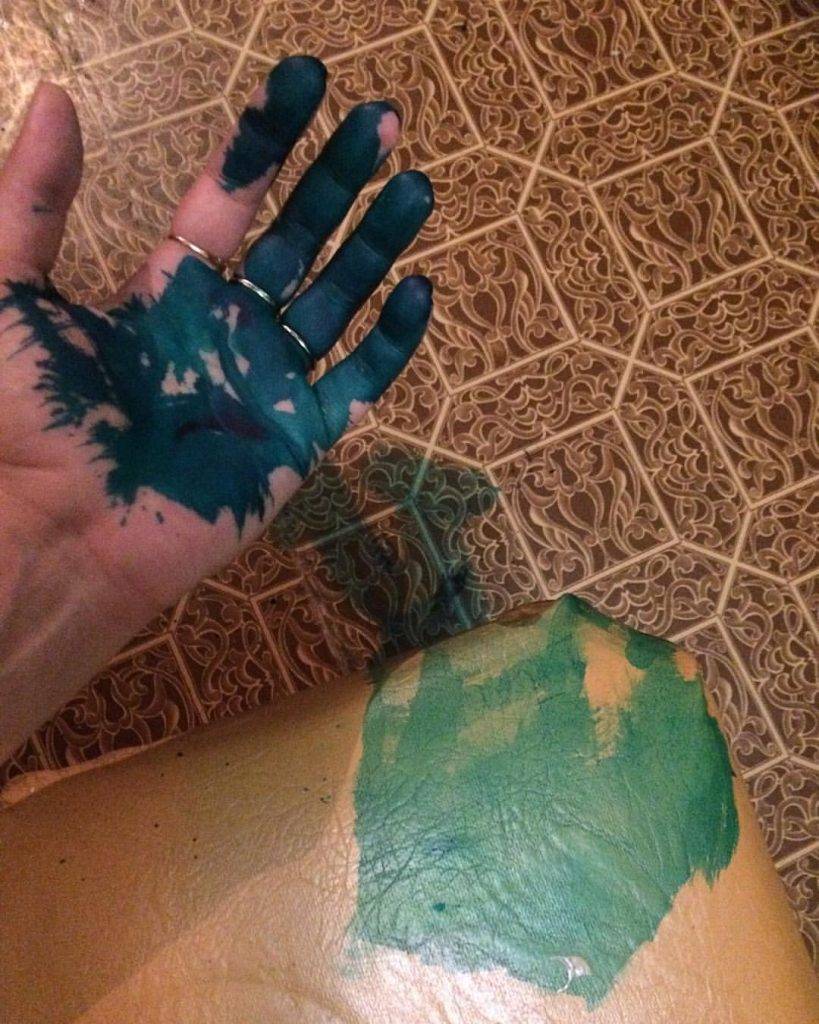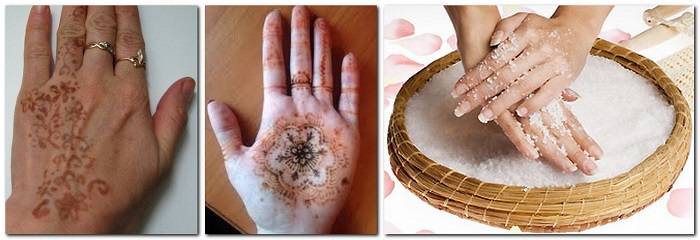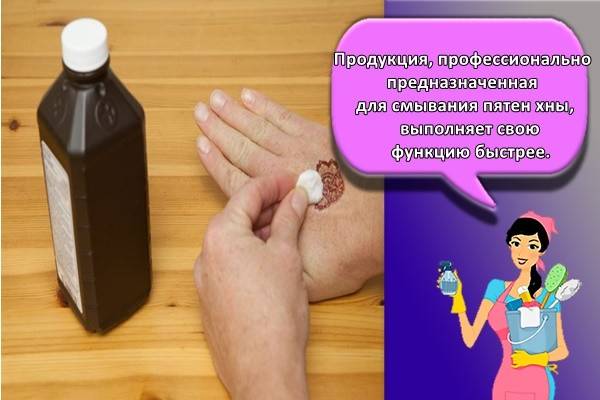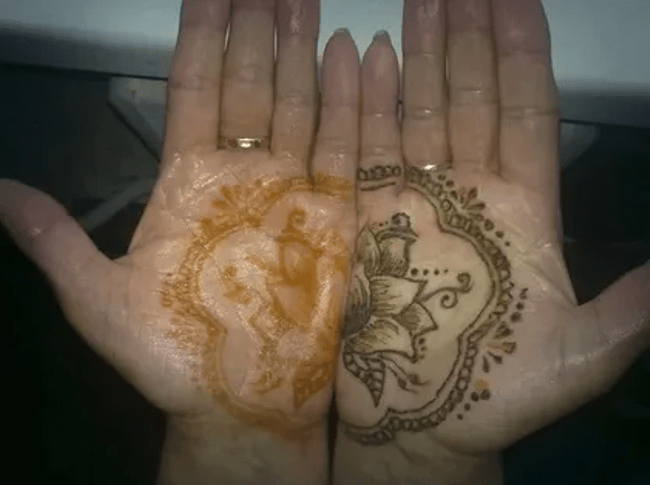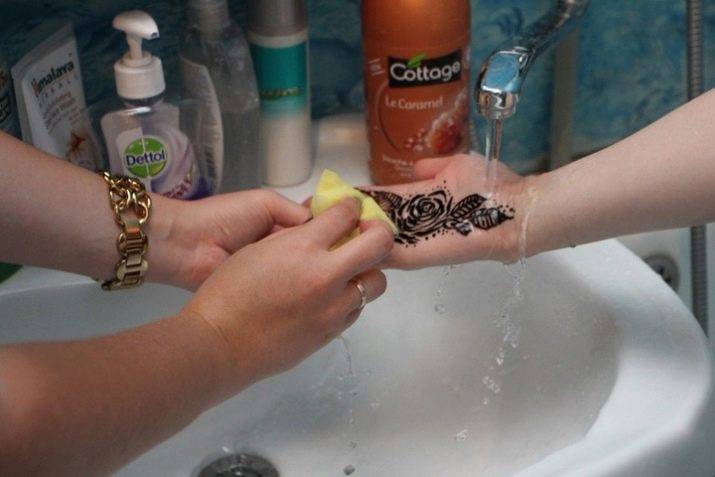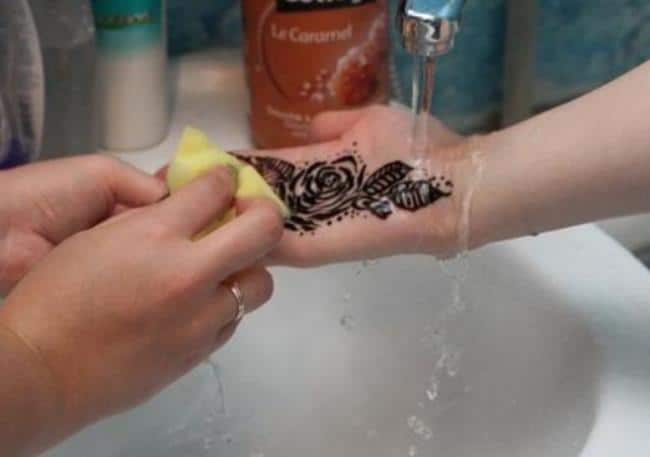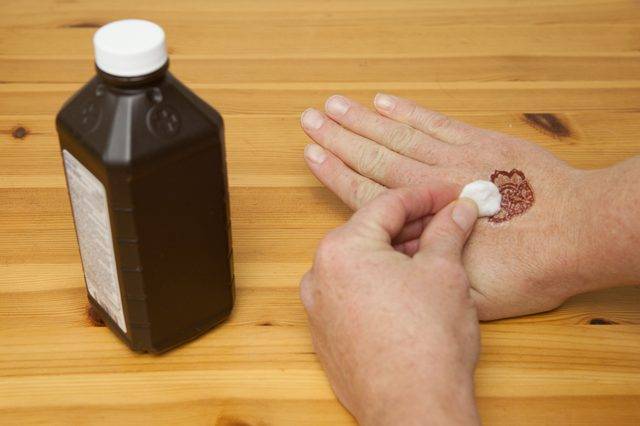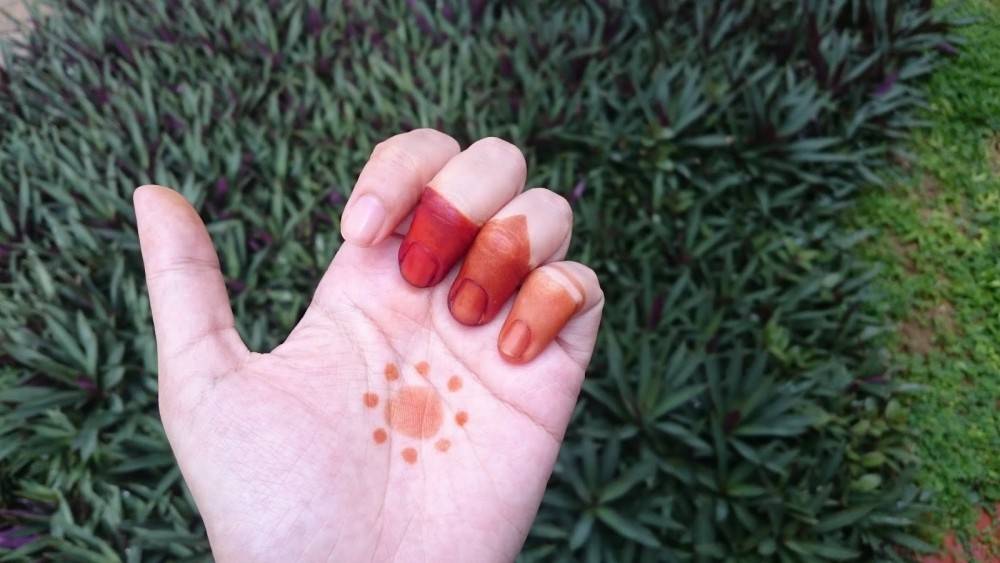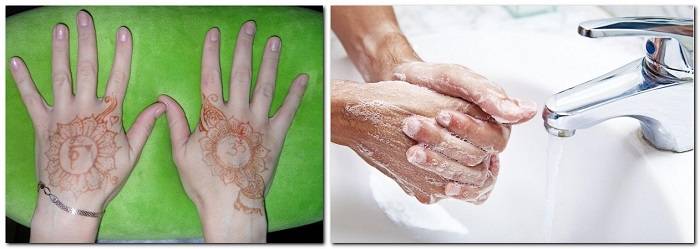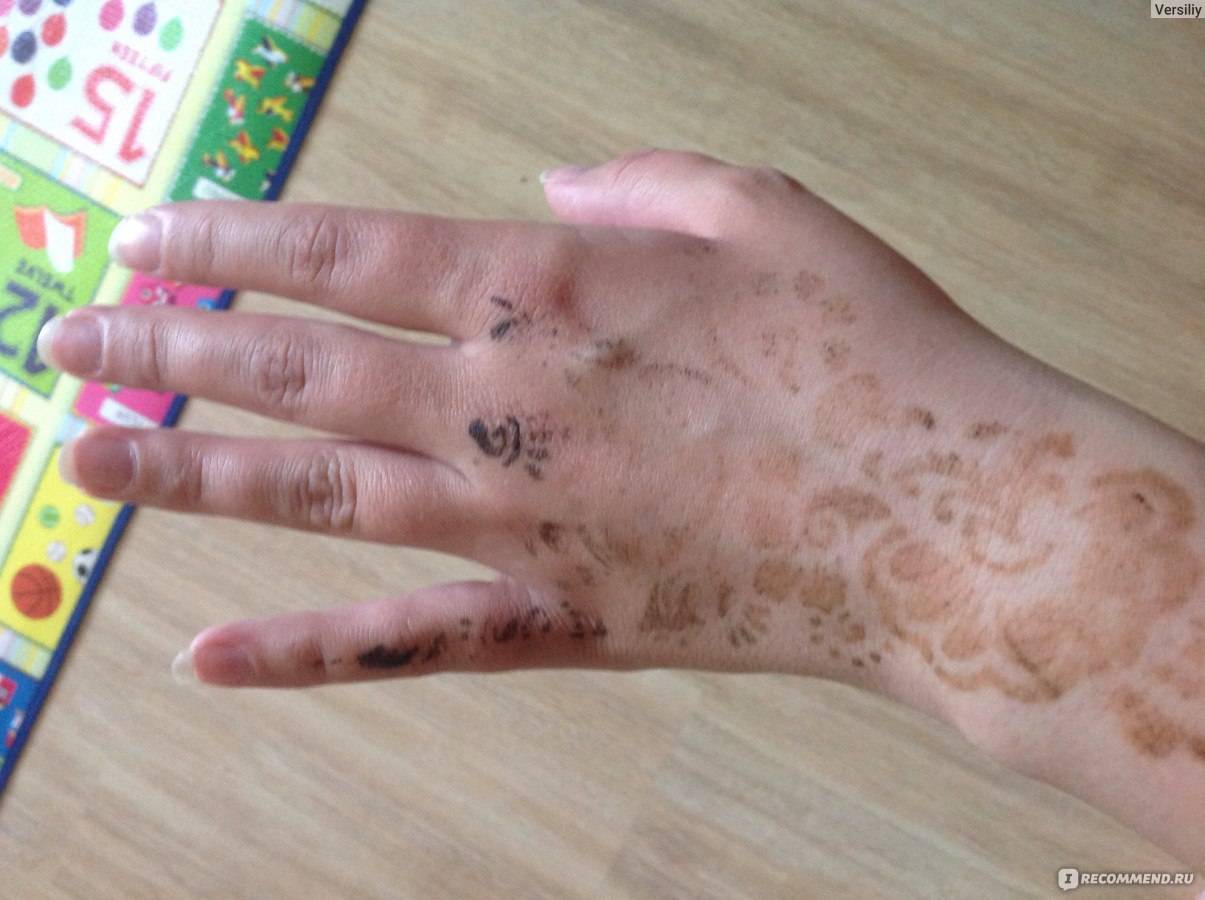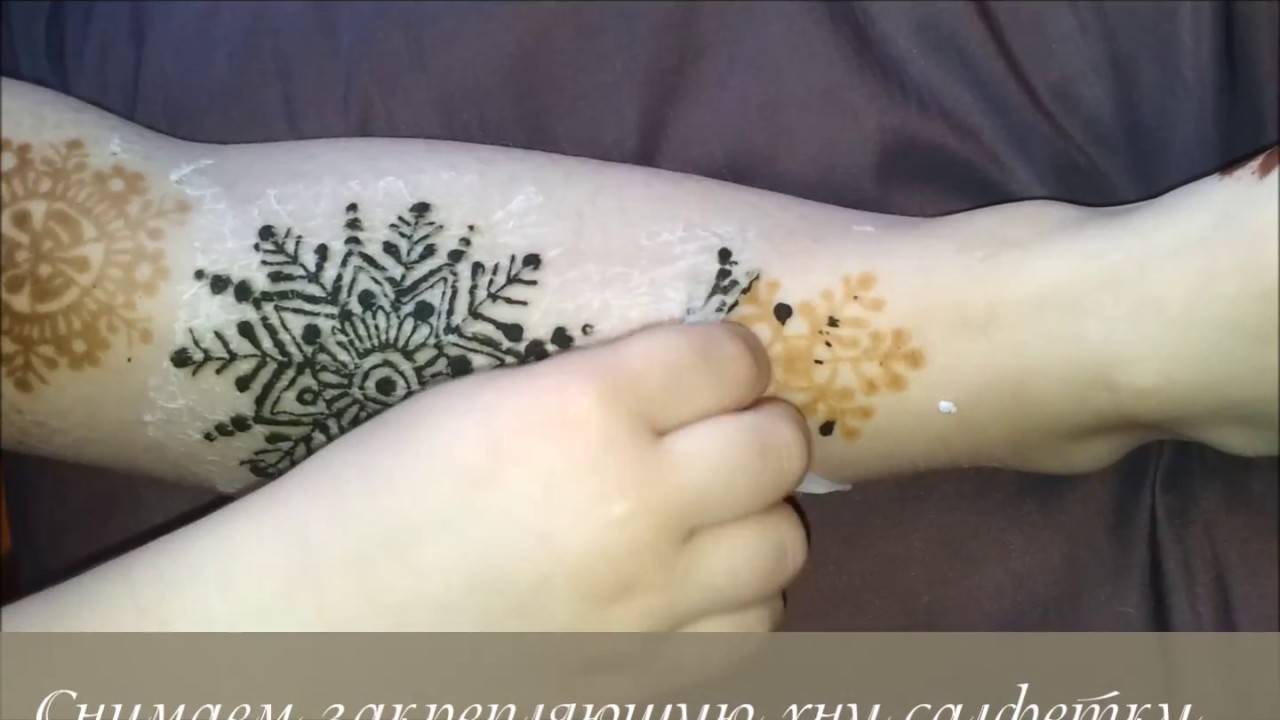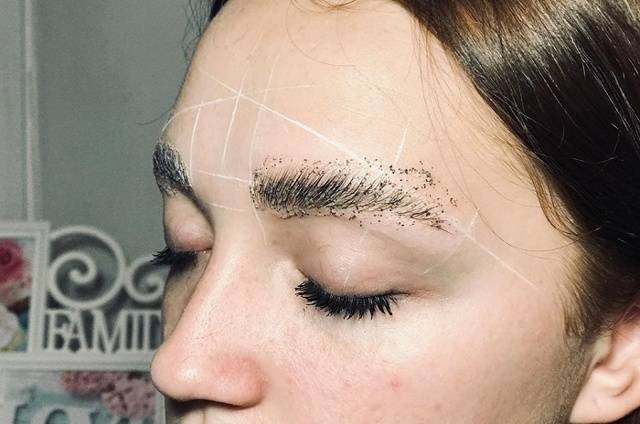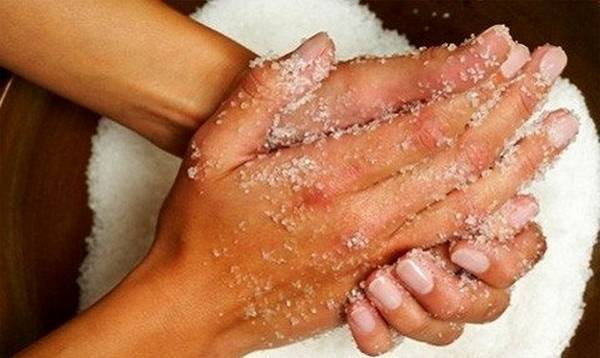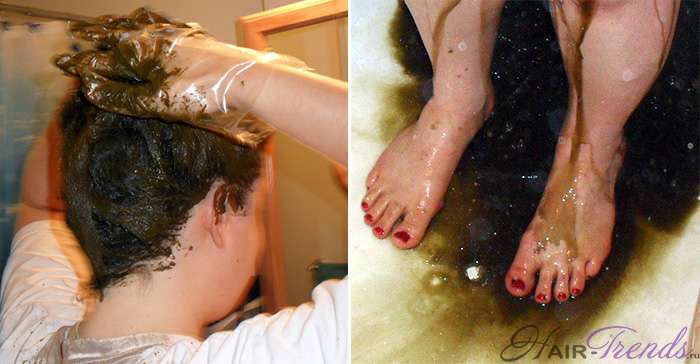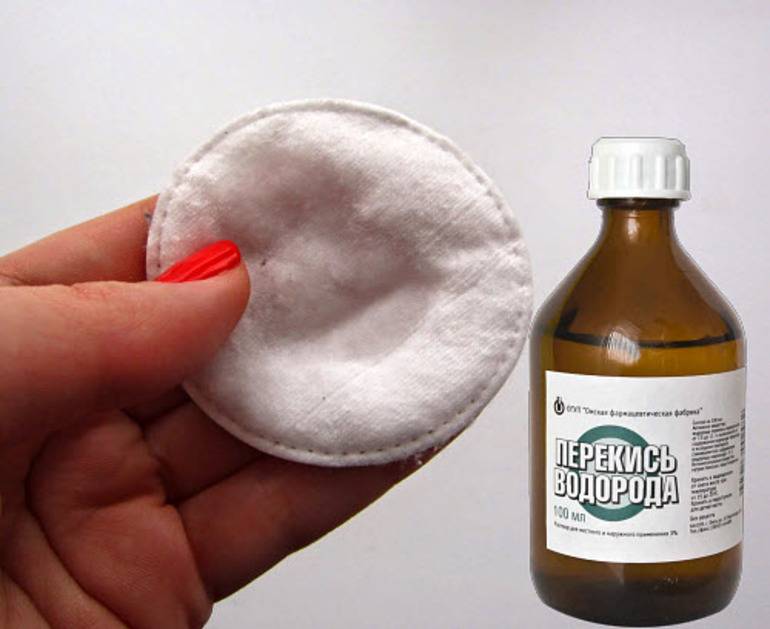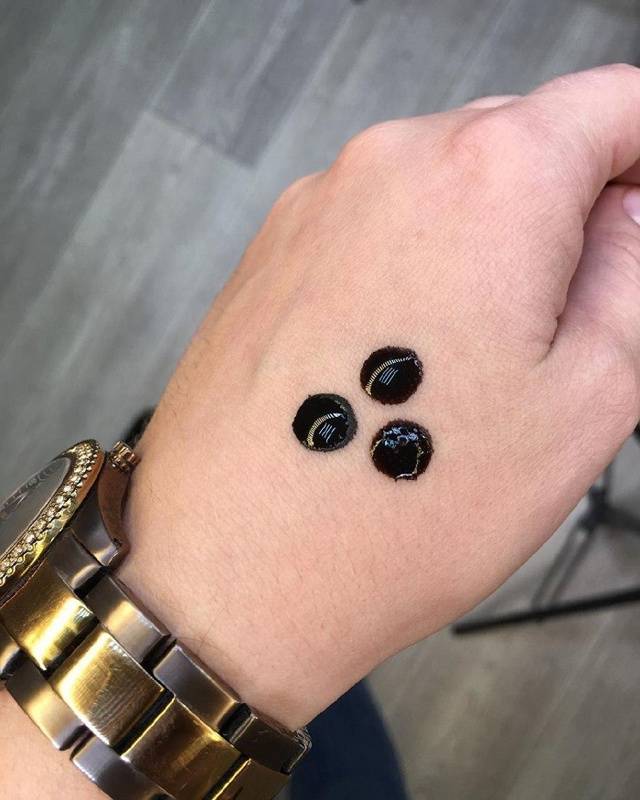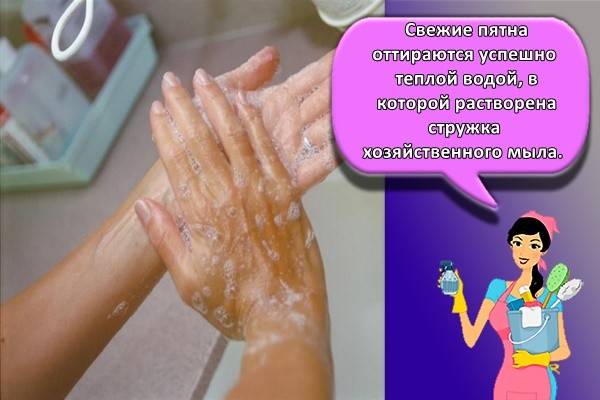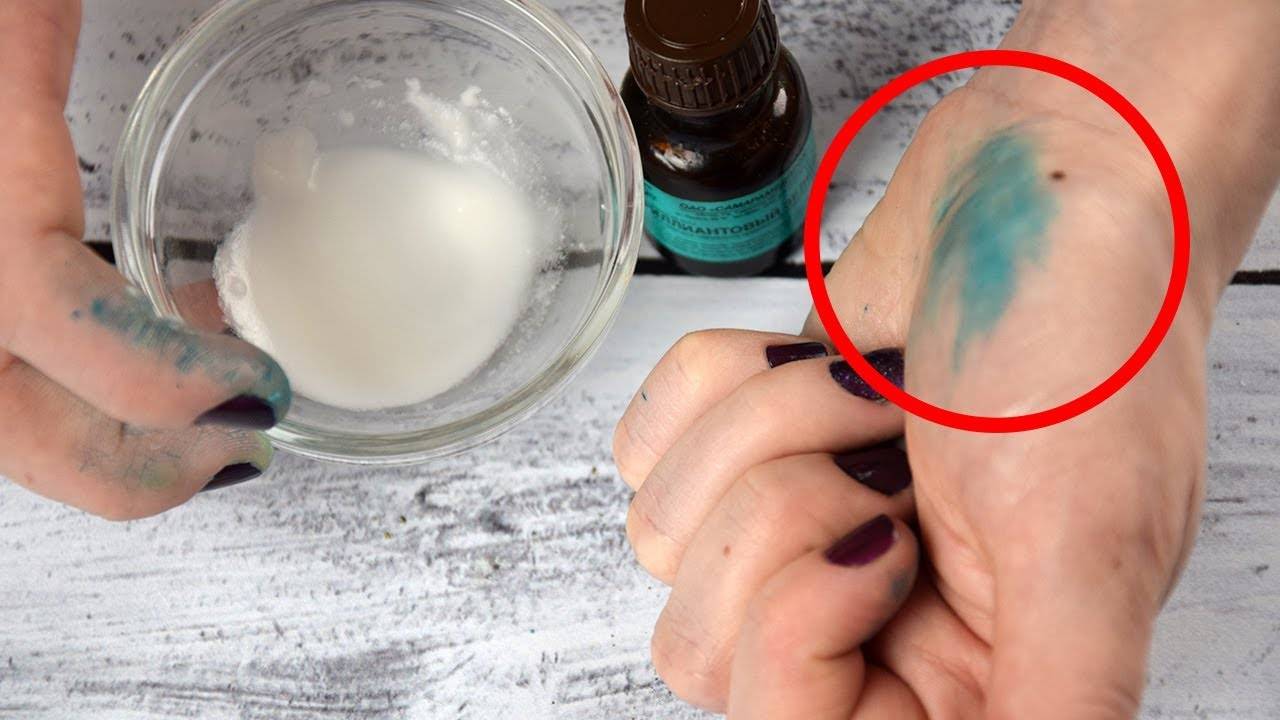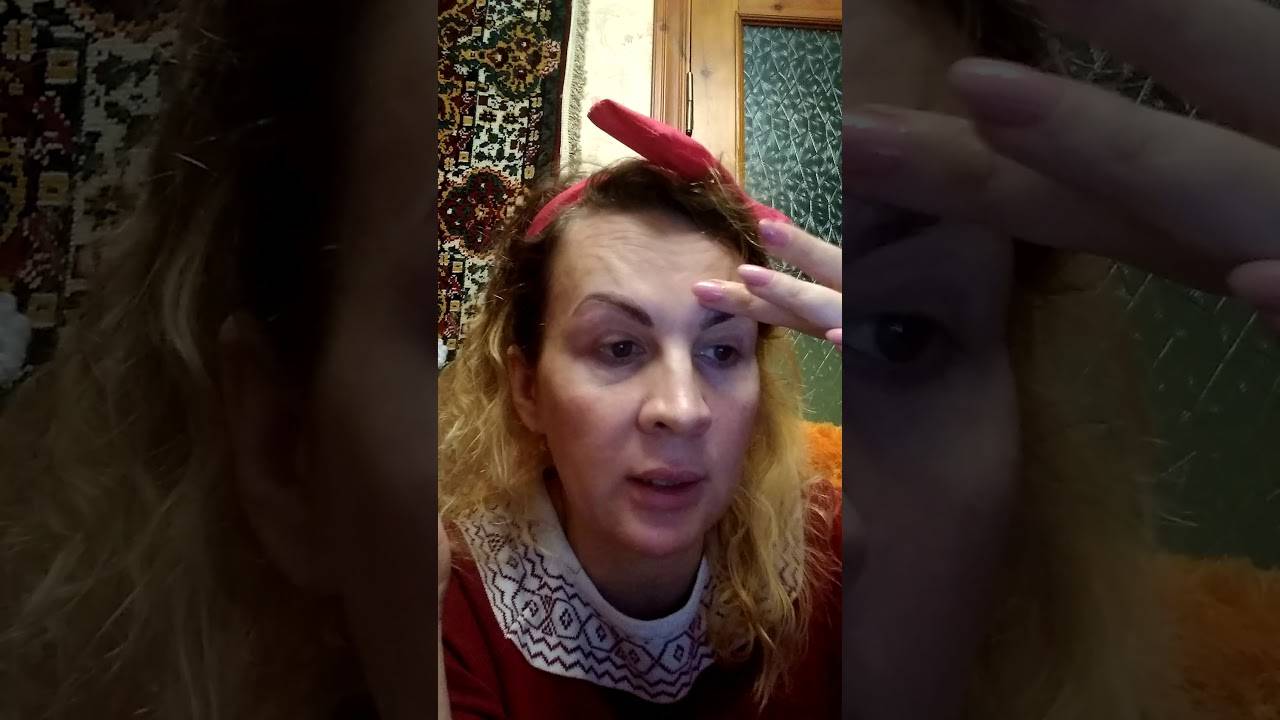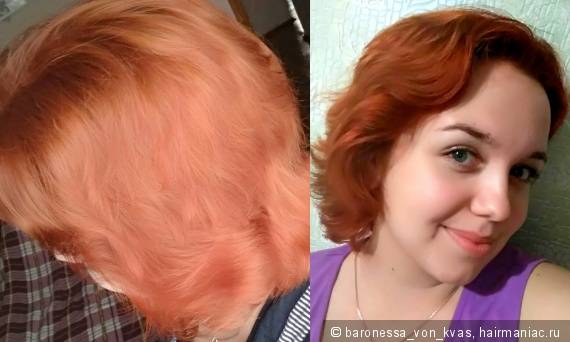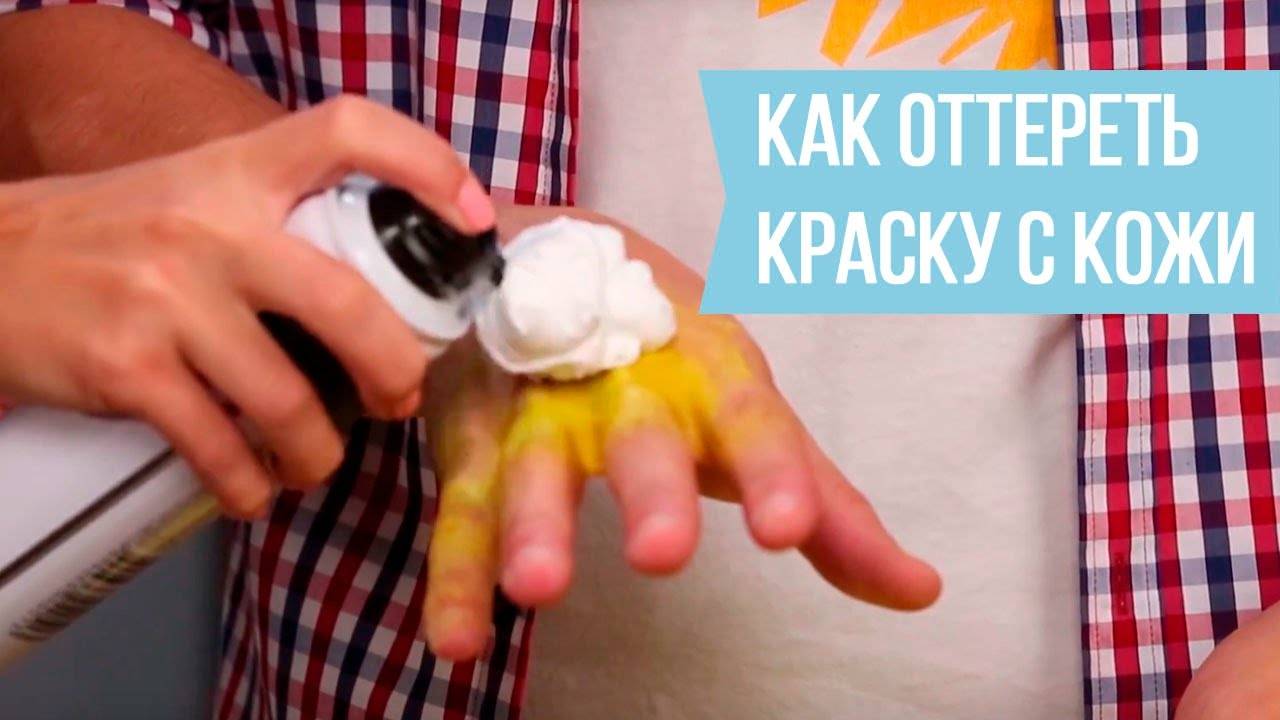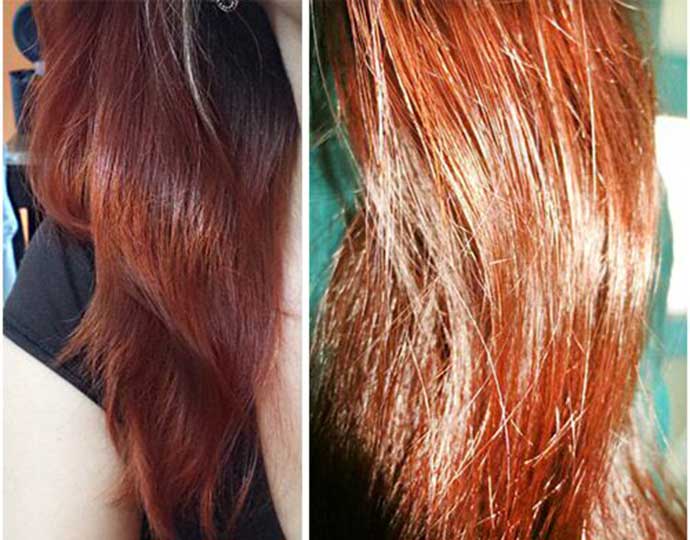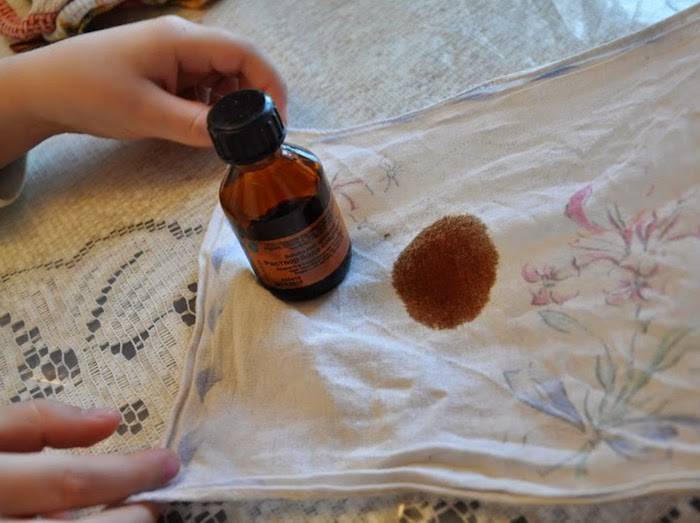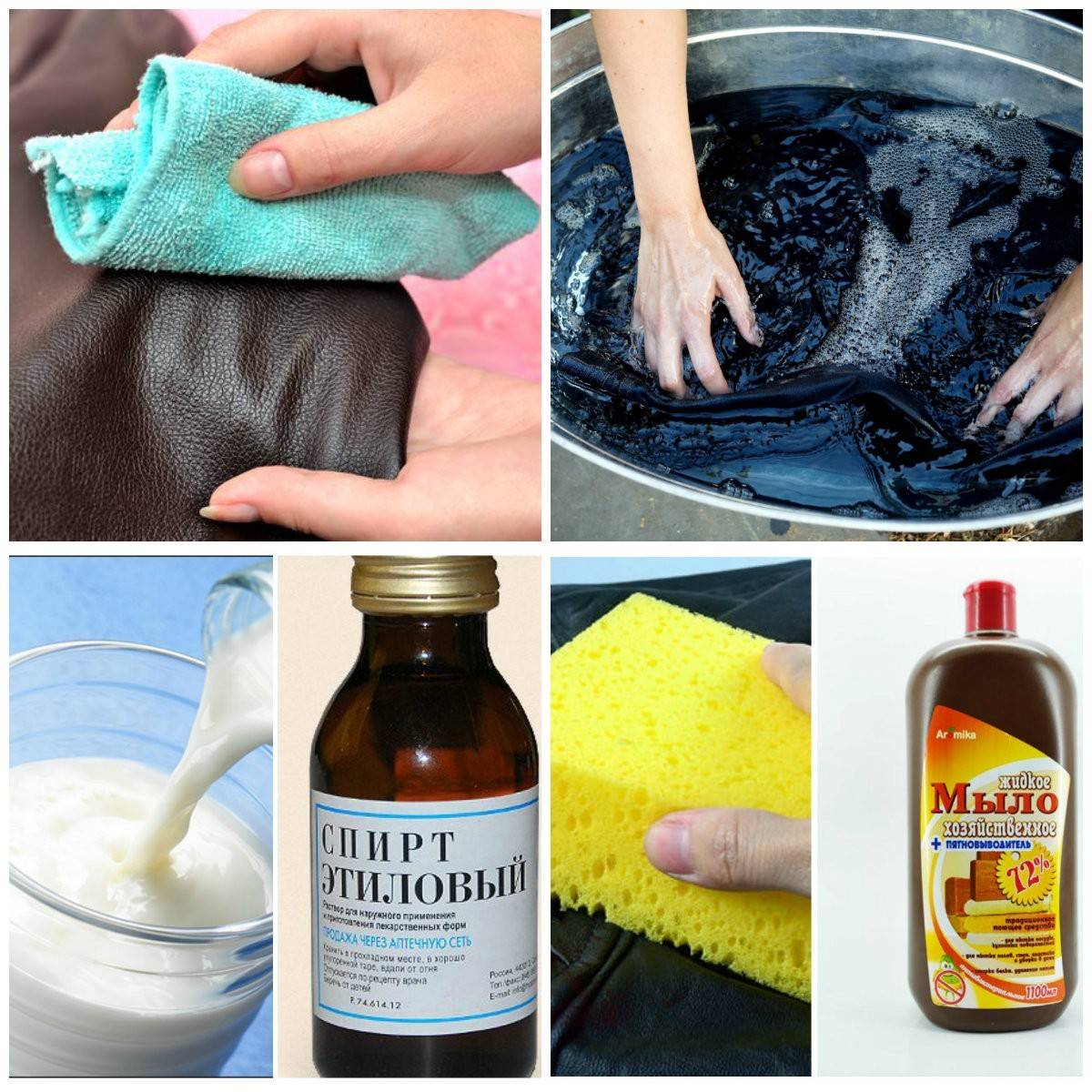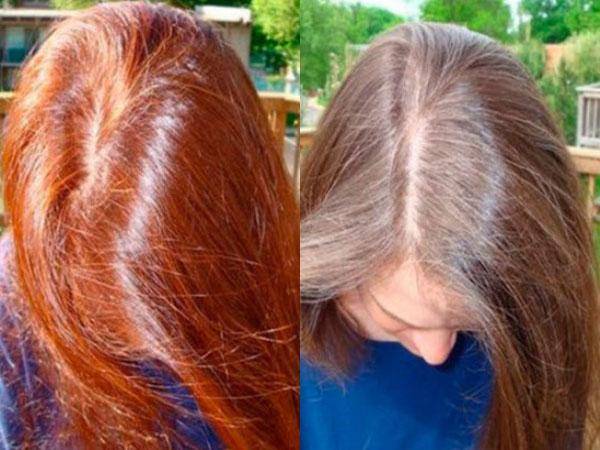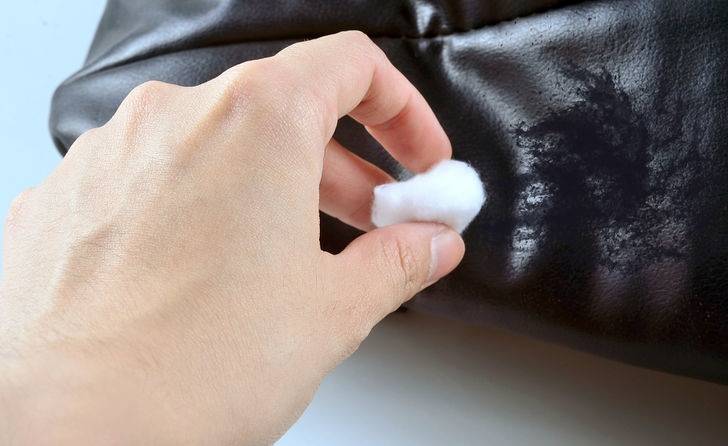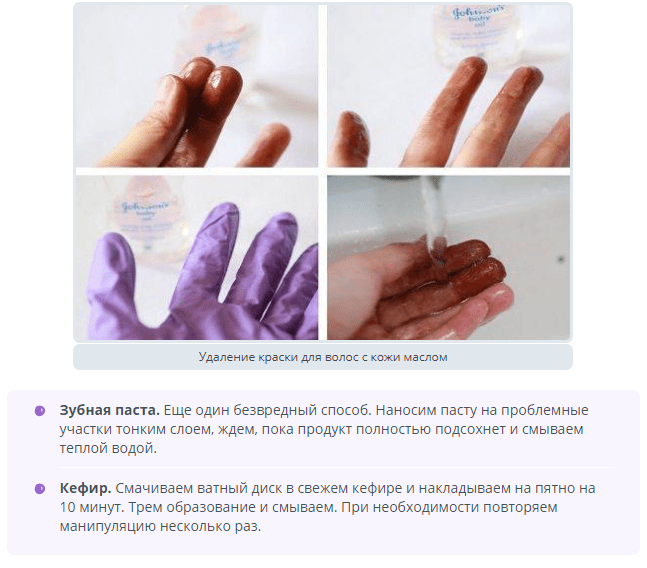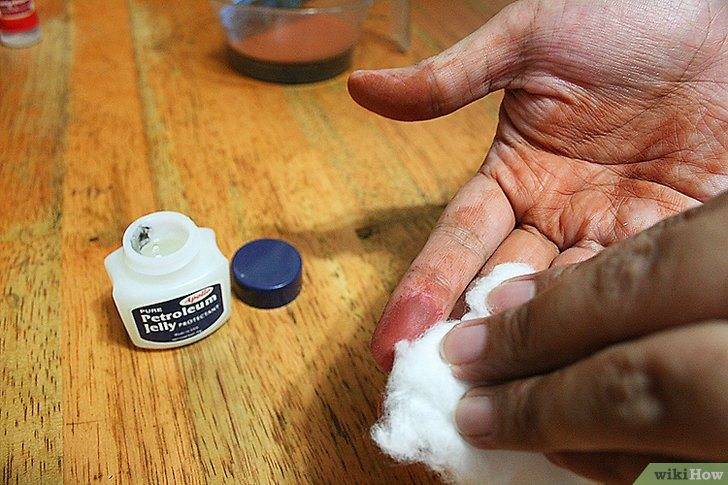16 effective ways to wash off henna
There are several ways to get henna off your skin that are available and work well.
- Lotion containing alcohol, or regular vodka. Saturate a cotton pad with lotion or vodka and wipe the areas that are stained with henna. The treated areas will become noticeably lighter.
- Scrub. Apply a regular body or face scrub to damp skin, massage and rinse. Can be done several times. As a result, the skin will brighten.
Lemon juice combined with regular baking soda. In one glass of water, dilute 1 tbsp. spoon of baking soda and lemon juice. Apply the resulting gruel to the henna stains and leave for 2 minutes. Rinse off with warm water. If it doesn't help the first time, you can use a scrub and repeat the procedure.
- Vinegar solution. Dissolve vinegar with water (for 1 part vinegar, take 1 part water), soak a cotton pad with the solution and wipe the skin, then rinse with plain water.
- Hydrogen peroxide. Moisten a cotton pad with the product and wipe the henna-stained areas - they will become completely pale. It is not recommended to wipe the skin with hydrogen peroxide several times a day, as it has a rather aggressive effect on the skin, which can cause a chemical burn.
- Lemon juice has a whitening effect on the skin. Squeeze the juice from half a lemon, soak a cotton pad in it, and wipe your skin. Can be done several times.
- Ammonia solution (10%). The tool helps to wash henna almost always. Soak a cotton pad in the ammonia solution and wipe the stains several times until the henna stain is completely removed.
- Sea salt. The method is not suitable for those who have lesions or wounds on the skin, as the salt will corrode them, which is very painful. Grains of salt in this case play the role of an abrasive, scraping the skin, at the same time removing the henna that has eaten into the skin.
- Salt bath. Dissolve 5 tablespoons of regular table salt in 1 liter of hot water. Soak your hands in the solution for 15 minutes, then scrub the stained areas with a brush or sponge. If it was not possible to remove the stains the first time, then the procedure can be repeated after half an hour.
- Vegetable oil combined with blue clay. Sunflower, olive, burdock oil will do. You can even use the usual creamy one. It is not recommended to use sea buckthorn oil, as after treatment with it, the skin will briefly acquire an icteric tint. Heat the oil, it should be hot but not scalding. Mix it with blue clay (for 1 part oil, take 1 part clay). Apply a warm mixture to the stained areas and massage well. Wash skin with soap and water. Repeat the procedure several times until the henna is removed. Hot vegetable oil helps to dry the skin, blue clay acts on the skin like a scrub, simultaneously accelerating regenerative processes and increasing the metabolic rate. After the procedure, apply the cream to the skin.
- Nail polish remover. Saturate a cotton pad with the product and wipe henna stained skin. Two or three treatments are usually sufficient to completely remove henna.
- Fatty cream. Spread your hands with any greasy cream such as Dove, Nivea and leave on for 30 minutes. Then wash off with water and gel or soap using a stiff washcloth. The first treatment will remove 50% of the staining from the skin.
- Thanks to its oil-based make-up remover, this waterproof makeup remover effectively removes stains. Apply to a cotton pad and wipe the stained areas.
- Cigarette ash. Dip a damp disc in cooled cigarette ash and rub the stained area.
- Antibacterial soap.Lather your toothbrush and rub the stains with it. Antibacterial soap removes many impurities while whitening.
Pumice. After preliminary steaming, rub the colored areas with a pumice stone without strong pressure. As a result, the epidermis is renewed, the spots disappear, and the hands look more well-groomed.
Almost all of the above means, which effectively remove henna from the hands or face, help to dry the epidermis. For this reason, after using them, apply a thick layer of moisturizer or cosmetic oil (eg rose, olive, almond).
Tips and Precautions
To eliminate natural dye in the form of henna on the face, it is not always possible to use popular methods that have proven their effectiveness many times over. To wash off henna that has got on the skin of the eyebrows and other areas of the face, the following rules should be observed at home:
- You need to be extremely careful when choosing a means to eliminate henna on the scalp, because the substance can get into the eyes. You can cleanse your face from biotattoo with lotions, oil formulations. With frequent hair coloring, it is advisable to use a special cosmetic product that removes waterproof makeup. It will have a less pronounced effect, but it will have the advantage of being safe for your skin.
- To avoid getting henna when dyeing hair on open areas of the skin, you should apply a greasy cream to these areas (temples, ears, forehead). After painting, wipe the areas of the skin treated with a greasy cream with a cotton pad. It is better to use the most greasy, thick cream. It will better protect the skin from the penetration of natural dye. This means that you will spend less time and energy on cleansing the skin.
- When the method you tried did not bring the expected result, do not give up. Try another method of removing paint residues at home. Only in this case, it is recommended to withstand 24 hours between procedures. This pause is necessary to prevent injury to the epidermis.
- After you have removed the henna using any of the methods described above, the skin should be treated with a moisturizer. This procedure helps to restore the regenerative capacity of the dermis.
- It is likely that removing henna or mehendi stains will not succeed in one procedure. Don't be upset. Use the remedy once or twice and the positive effect will not be long in coming.
- Henna is fairly easy to rinse off if done immediately after the pigment gets on the skin. Even after rinsing with plain water, there will be no trace left. It is more difficult to remove old stains, because the pigment is already heavily ingrained.
In order not to waste energy, nerves, time to cleanse henna, it is better to prevent accidental pigmentation. This is of course possible when dyeing your hair. But, if you have done mehendi, get ready for a long job. Better yet, get a tattoo done by trusted masters and carefully select a pattern so as not to then look for a suitable way to remove mehendi from the skin.
How long does the henna pattern last on the skin
Henna is often used for tattooing, hair coloring. This tool attracts women by the fact that it can be gradually washed off and does not harm the skin and hair. In addition, you can erase stains or a tattoo using one of the methods described above.
Share this
Class
Share this
Tweet
Zapin
Stain protection
It is very difficult to wipe off reddish spots, and the most effective methods are harmful to delicate skin.
This is why precautions should be taken when working with natural dye.
- Dye your hair only with gloves, they will protect your hands.
- Before the procedure, apply a thick layer of greasy cream, wax and petroleum jelly along the contour of hair growth, carefully smear on the ears and neck. These products are easier to rinse off than henna stains.
- When applying a henna pattern to the body, you should have a wet rag or cotton pad on hand - if the line does not turn out the way you intended, you should remove it before the dye is absorbed.
These simple tips will help you avoid the problem and prevent staining of unwanted areas of the body.
Ways to remove henna from the skin
Henna is a natural dye of bright red color, which is obtained from the leaves of Lawsonia. It manifests itself in a rich shade and amazing durability. Removing stubborn henna stains from the skin is difficult, but possible.
Hot water
Henna hates high temperatures. An area of skin with an unpleasant spot should be thoroughly steamed and immediately wiped with a pumice stone, just do not press too hard, otherwise abrasions cannot be avoided. And it is not necessary to reheat the skin, it is better to wait a while.
Sea salt
Use sea salt to remove stubborn stains. This product has both physical and chemical effects. Salt is usually sold in the form of large crystals, so before using them you need to grind them with a coffee grinder, but you do not need to turn the product into powder, otherwise there will be no sense from it.
Apply a pinch of salt to the stain, lightly moisturizing the skin, and rub gently. A small amount of water can be added as needed. Continue the procedure until the salt is completely dissolved. If the stain has not completely disappeared, you should wait a little and repeat the action.
Sea salt can be used in the form of baths: in hot water, but so as not to burn yourself, dissolve the salt and put your hands in the water, hold for about 20 minutes, then wipe the steamed skin with spots with a pumice stone.
Cosmetic scrub
Do you want to regain sensitivity after childbirth? There is a simple remedy ... Click here>
You should take a product with small particles of abrasive substance and apply in the same way as described in the previous version. Use the scrub no more than 3 hours before the spots disappear completely.
Hold for 30 minutes and wash off with soap.
Lotion
Luxurious figure
without a gym!
Fitness Resistance Bands
will allow you to organize a complete and
effective training both at home and at
street. Achieve the desired result
you can do just 20 minutes a day!
Suitable for both beginner and trainer!
The lotion can be used to cleanse the skin of the hands and face.
Vodka
In the absence of a lotion at home, it can be replaced with ordinary vodka, nail polish remover, hydrogen peroxide or 10% ammonia solution. But for cleansing the face of henna, such products are not suitable.
And it is better not to use them if there are wounds on the skin, acne - it will burn a lot.
Soda with lemon
Soda mixed with lemon juice is useful for treating henna stains. Both agents are aggressive, and lemon should not be used separately, but when combined, the effect of the ingredients is extinguished, and the mixture does not provoke negative consequences. But it is better to apply the substance in small portions.
When mixing them, the mass begins to bubble, at this very moment, while the reaction is going on, and you need to use the product.
You can use citric acid instead of lemon juice. After mixing it with baking soda, add a few drops of water (not hot!).
Oil and cognac
Mix equal amounts of olive oil and cognac, depending on the amount of dirt or the size of the pattern. The mixture is applied to the skin for an hour, then washed off with soap.
According to reviews, laundry soap has the best effect.
Tooth powder
Luxurious figure
without a gym!
In the old days, polished surfaces and jewelry were rubbed with them to a shine. The fact is that the powder has an abrasive effect, designed to gently remove stubborn dirt.
Wet the toothbrush in water and dip the bristles in the powder, wipe the spots on the moist skin with circular soft movements.
Ashes from a cigarette
The most original method, which at first glance seems ridiculous, but hairdressers resort to it.Yes, even professional craftsmen have troubles in the form of hands stained with paint after the coloring procedure.
The method is as follows: moisten a cotton pad with water, squeeze out slightly and apply cigarette ash on it. Rub the spots until they disappear completely.
By special means
There are various special products for removing henna and mehendi stains from the skin. You can get them at professional hairdressing stores, tattoo parlors or hairdressers. These tools have both pros and cons. The positive properties include the fact that they have an instant effect, and they can remove not only stains, but also paint from regrown hair.
Cons - the products have a sharp specific smell (therefore, when using them, you need to wear a mask), and they are quite expensive.
Detailed instructions for use are always included with the product.
1 Ways to remove henna from the skin
Almost all modern hair dyes, including henna, are sold complete with protective gloves so as not to get your hands dirty while dyeing your head. In addition, henna drawing is very popular; this technique is called mehendi. The peculiarity of the tattoo is that it can be quickly erased only within ten days from the date of its application, then it is extremely problematic to do this.
To wipe Indian henna from hands, eyebrows, the following methods will help:
- 1. Hot water. Steam the area of the drawing in hot water and rub it with a pumice stone, without making any special efforts, otherwise abrasions cannot be avoided. If the first time it did not work out to erase the stain, it is better to try again to wash it off the next day.
- 2. Sea salt. It is usually sold in the form of large crystals, so it will first need to be ground in a coffee grinder, but not to a powder state. Moisten the skin slightly with water, sprinkle a pinch of salt on the stain, rub lightly. It is recommended to repeat the manipulations no more than two times, if the trail has not completely disappeared on the first try.
- 3. Alcohol-based lotion. Apply a small amount of the product to a cotton swab, rub the area with the pattern. So, step by step, wetting the cotton wool, you can quickly remove the mehendi.
- 4. Tooth powder. Wet a toothbrush and soak it in powder. Rub the blemishes on moisturized skin in a circular motion, without using too much effort. It is quite difficult to wipe off henna, which has managed to penetrate into the deep layers of the skin, in one day. Therefore, if you do not like the drawing or there is a stain from the paint, you must wipe them off immediately, without harm to the skin.
- 5. Olive oil and cognac. Mix them in equal amounts depending on the size of the pattern or the area of contamination. Apply the composition to the skin, wash off after 60 minutes with laundry soap.
It is also considered a safe way to use burdock oil or liquid to remove waterproof makeup. A swab moistened with any of these products will remove henna from hands, skin or eyebrows.
Recipes for effective masks
Masks made from food ingredients are good enough to remove color pigment, and ingredients can be taken straight from the refrigerator.
- From kefir. Mix about a liter of kefir with a small amount of cosmetic clay, which is sold in the pharmacy in powder form. After obtaining a homogeneous composition, apply it for several hours along the entire length of the hair.
- Yeast. Mix a pack of yeast with kefir, put in a warm place. After the mass has swollen, apply it to the hair and keep it for 2 hours. If necessary, this procedure can be repeated several times within 3-4 days.
- From onions. To make this mask, press in several onion heads to get fresh onion juice. You can simply make onion porridge with a blender and apply it instead of juice to the entire scalp. After 30-40 minutes, wash off with warm water and shampoo. The disadvantage of this mask is a very corrosive onion smell.
- Red pepper.This mask is also used to activate hair growth and awaken hair follicles. To do this, insist on vodka a few pods of red hot pepper and apply to hair for a maximum of 20 minutes, then rinse well.
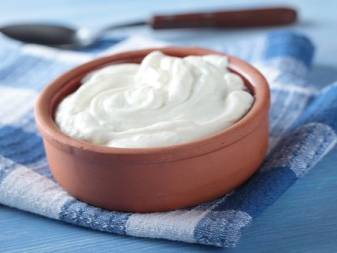

Masks with the addition of various natural oils will also help reduce stubborn color pigments.
- From sunflower oil. Sunflower oil should be slightly heated in a water bath and distributed with a comb over the curls. Rinse off with shampoo after at least a few hours.
- Made from butter. Mix a little natural butter with a little flaxseed oil, heat in a water bath until smooth and apply on hair for several hours. This procedure should be repeated several times.
- Made from olive oil. Mix equal proportions of olive oil and mustard oil. Warm up slightly and apply for 30-40 minutes. Repeat several times a week.
Some other substances, which are also at hand with a good housewife, can remove natural paint.
- Laundry soap. A brown, not very pleasant-smelling soap has many positive qualities, including helping to get rid of bright henna stains. To do this, you should lather your hair and wrap it for 15-20 minutes. After their expiration, you should rinse your hair well using a caring balm rinse.
- Table vinegar. It is necessary to dissolve a few tablespoons of vinegar in a liter of warm clean water, then pour this solution into a basin and immerse your hair in it, protecting your eyes from getting into. It is necessary that the agent acts on the hair for 15 minutes, for this you can hold the hair in the pelvis for as long as possible, and then simply dip it often. After the procedure, you need to rinse your hair in warm water using a balm.
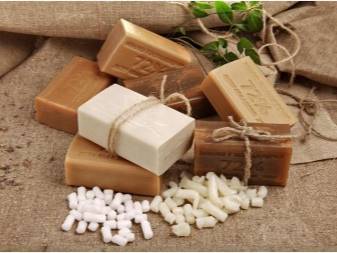
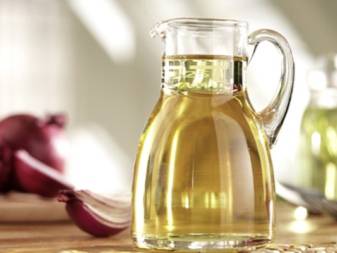
They wash out the coloring pigment of the mask with an alcohol content quite well.
- Brandy. Combine cognac and castor oil in equal amounts. Apply to strands for 40-60 minutes. Then rinse with hair conditioner.
- Soda. Mix some rubbing alcohol with baking soda. Add a little lemon juice and apply on hair for a few hours. This tool has a very negative effect on the health of the curls, but it will quite effectively eliminate the effects of henna.
- Vodka. Mix vodka, olive oil and bee nectar in one container. Heat and distribute the resulting mixture through the hair from roots to ends. After 3-4 hours, rinse thoroughly.


Basic ways
If you have unsuccessfully dyed your eyebrows, but there is no hurry, you can use safer methods. Often, ordinary vegetable oil is used to solve this problem. The composition will not only remove the dye from the eyebrows, but also preserve their structure. For the procedure, you can use castor, almond, vegetable, olive oils.
To remove henna, a cotton pad must be moistened with liquid. They rub their eyebrows all day long. A cotton pad treated with oil should be held near the painted area for several minutes, after which the skin should be wiped with an alcohol-containing product. Lotion or perfume is a good and safe choice.

You can wash off henna from eyebrows with lemon juice. Most often, this method is used in cases where the shade is too saturated. A cotton pad should be soaked in lemon juice, after which it should be applied to the eyebrow for 3-4 minutes. At this time, you may feel a slight tingling sensation, but do not worry, as this is a normal reaction.
In this case, the paint will not be removed, but will only become slightly dull. For the procedure, you can use not only fresh juice, but also concentrated citric acid.
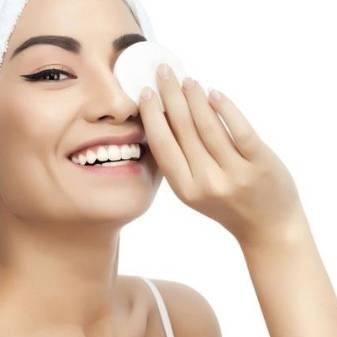
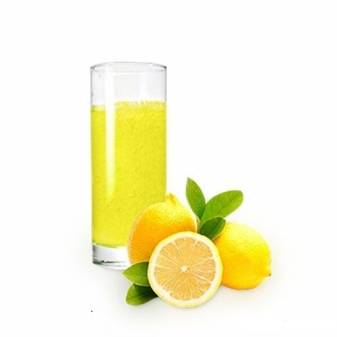
Often, regular soap is used to remove paint. For removal, it is best to use a household product 72%. If such soap is not at hand, you can take the usual option. However, be prepared for the fact that it will take about 2 days to remove henna from eyebrows.Do not forget that the alkalis present in the soap dry out the skin. In the process, it is recommended to use a nourishing cream.
Another available method is the use of baking soda and shampoo. The soap solution must be mixed with 1/3 tsp. soda. After complete dissolution of the product, you need to lather the area above the eyebrows. After 30 minutes, the composition can be washed off.
Quite often, toothpaste is used to remove henna after staining. The composition must be carefully applied to the hairs, and then washed off. If you plan on completely lightening your eyebrows, you can repeat the procedure after a while. Keep in mind that toothpaste can cause burning and irritation on the skin. For this reason, it is best to use it as little as possible.

For owners of sensitive skin, chamomile decoction can be used to remove paint. This composition washes henna from the skin as gently as possible. Chamomile (50 g) needs to be poured with a glass of boiling water, after which the liquid is left for 1 hour. Then the cotton pad must be moistened in the infusion and applied to the eyebrows for 20 minutes.
This option is not a quick method, but you can rest assured that it is safe. The skin does not dry out, and the dye gradually disappears from the hair.
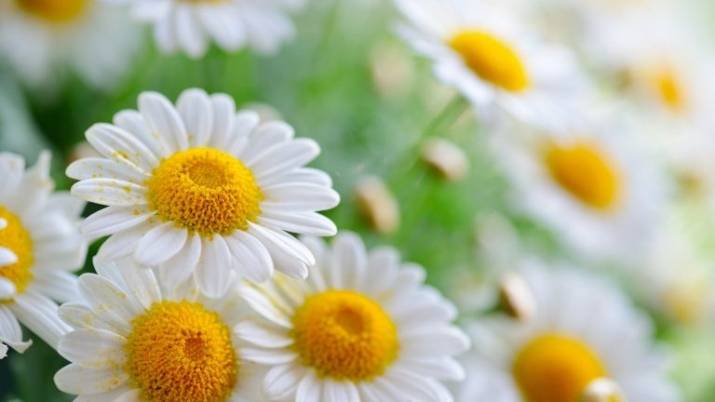
Folk remedies for removing henna from the skin
Henna tattoos came to us from India. They have been made there for more than 12 centuries, so many ways have been created to speed up the removal of dye from the body.
Ammonia
This method will be able to remove henna from the first application. You will need to apply a 10% ammonia solution to cotton wool and wipe the tattoo several times. Then rinse with water.
Vinegar
You can wash off the tattoo with a vinegar solution. You will need to mix it with water in a 1: 1 ratio. Then moisten a cotton pad in the solution, wipe the stained areas of the skin, rinse.
Hand cream
First you need to grease the drawings with a fat cream and hold for 30 minutes. After this time, wash off everything with a washcloth and soap. Repeat if necessary.
Water
Perhaps this is both the easiest way to wash off henna, and the fastest. You just need to pour hot water into a basin or bowl and steam your arms or legs with a tattoo in it. Or take a bath if the pattern is on the body. After 3-4 baths, the henna will be completely washed off. After steaming, you can use a pumice stone or scrub, the main thing is not to overdo it and not damage the skin.
Soap
An antibacterial or laundry soap is suitable for this method, as it has a whitening effect. To wash off the remnants of henna from the skin, you need to soap a brush (you can use a toothbrush) and rub the stained areas
If the tattoo was done on the hands, then special attention should be paid to the nails.
Coarse salt
Salt is needed about medium size, that is, not too coarse, but not powder either. If not, then you can grind the coarse salt in a coffee grinder.
You need to apply a small part to the skin and rub, but not too hard. The salt particles will work like a scrub, removing dead epidermis along with the henna.
Can also be used as a bath. Application procedure:
- Dissolve salt in hot water.
- Dip your hands into it for 20-30 minutes.
- Rub the steamed tattoo with a pumice stone.
If the henna pattern is not on the arm, but for example, on the neck or on the thigh, then you can make a salt mask. For this:
- Prepare a strong salt solution.
- Soak a cloth or bandage in it.
- Apply to the tattooed area.
- Hold for 1 hour and then rinse.
Scrub
If you need to wash off the pigment from the face, then this method is most effective. The application is simple:
apply the scrub to the skin and massage, then rinse and lubricate with moisturizer.
Vegetable oil
You can rub off henna using various oils. For the best effect, they need to be heated in a water bath, then generously lubricate the skin with it and wait 30-40 minutes. Wash off with soap and water. You can use any oils: olive, sunflower, castor.
An improved version of the recipe is to mix oil and cosmetic clay in equal proportions. Apply the mixture to the stained area and grind.The scrubbing properties of the clay will help you scrub away the pigment faster. Repeat the procedure several times, then moisturize the skin with a cream.
Alcohol
To remove henna with alcohol, you can use alcoholic lotion or vodka. They need to soak a cotton pad and wipe the painted areas.
Dentifrice
Thanks to the whitening properties of such a powder, henna can be erased after 5-6 applications. First you need to wet the toothbrush and the area of the body with the pattern, then apply the powder to the skin and rub gently with the brush.
Olive oil + cognac
The method is quite simple. The required volume of substances depends on the size of the picture, the larger it is, the more ingredients will be needed. So, to wash off the remnants of the tattoo, you need to make a mixture: combine oil and cognac in equal parts, apply a thin layer on the skin and leave for an hour. Then lather and rinse. It is better to use laundry soap.
Soda + lemon
You need to use this method very carefully, since soda and lemon are aggressive substances in themselves. Lemon juice can be substituted with citric acid, but it will need to be diluted with water before use. This method will help reduce the henna very quickly.
It is necessary to mix soda and lemon juice, apply the bubbling mixture to the drawing. Soak for 10 minutes, and then wash off using a washcloth. Wipe off any remaining stains with soap.
Peroxide
The first aid kit, such as hydrogen peroxide, will help wash the henna off the skin. It is necessary to soak a napkin in the solution and apply for 5-10 minutes to the skin with a pattern. After the henna has soured, you can rinse it off.
How to prevent hitting?
Everyone knows that it is better not to deal with the consequences, but simply to prevent their occurrence. This rule also applies when dyeing hair with henna.
First, gloves must be worn on your hands. This applies to all hair dyes, and just for homework. Women who care about the beauty of their pens have long been accustomed to using this useful accessory to protect the skin from various irritants. In almost every pack of paint (including those based on Lavsonia powder), there is a pair of gloves specifically for this.
Secondly, on the forehead, face, ears, along the entire hairline, you need to apply some kind of oily cream. Do not use fast-absorbing products, as paint will be absorbed along with them. You need to apply the cream in a thick layer, without sparing. The thicker the cream is applied, the less likely it is to stain your skin. And you can wash it off while washing your hair.
In addition, beeswax can be used to protect the skin. It forms a protective layer on the epidermis that prevents pigments from penetrating. The wax needs to be slightly warmed up in a water bath to soften it. This makes it easier to apply. You need to distribute it along the entire hairline. Do not forget about the ears, they often end up in paint spots.
The rest of the body should be covered with old clothes, which you will not mind getting dirty.

